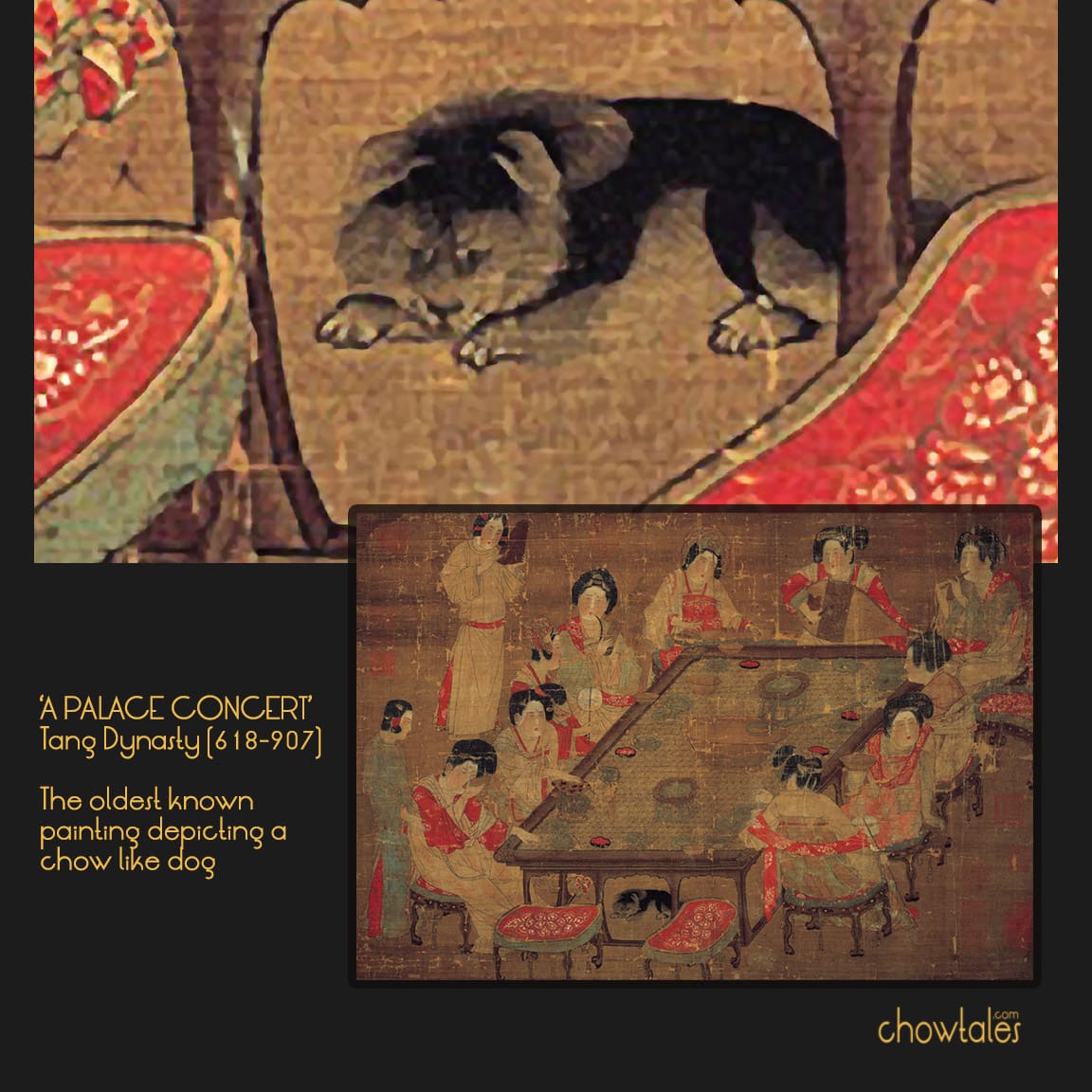A PALACE CONCERT Tang Dynasty (618-907) Oldest known painting depicting a chow like dog
The painting you see above is one I have always looked at with fascination (and with squinted eyes) since my early years in Chows. In “The Book of the Chow Chow” by Samuel Draper, this hanging scroll is reproduced in black and white on page 14. The book was published well before all the wonderful digital tools we have at our disposal today, so I took advantage of my one of my programs to enlarge this little fella to see more details. WOW…what pleasant surprise this was to see the little dog fill my screen with no distortion to the original artwork.
The only changes I made other than resizing was to lighten the dog a bit so you can see that VERY chowlike face with typical eyes and ears . Also note this dog may be depicted as one of the highly prized colors of the wealthy and royalty during this timeframe……. a “blue”.
A Palace Concert (宮樂圖)
Anonymous, Tang Dynasty (618-907)
Hanging scroll, ink and colors on silk, 48.7 x 69.5 cm, National Palace Museum, Taipei
This painting shows ten ladies of the inner court sitting around a large rectangular table. Some enjoy tea, while others drink wine. The four figures at the far end seem to be responsible for playing music and livening up the atmosphere. The instruments that they hold, from left to right, are bamboo pipes (篳篥), zither (古箏), lute (琵琶), and flute (笙). The two standing figures are servant girls; the one in back plays a clapper (牙板) to keep beat. The melodic and elegant music almost seems to intoxicate the figures, judging from their expressions. Even the small dog under the table seems undisturbed.
This work bears no seal or signature of the artist. However, the original title slip reads, “Picture of A Palace Concert by a Yuan (1279-1368) Artist.” Close examination of the hairstyles shows that some are combed in one direction on top (so-called “falling topknots 墜馬髻”), while others are combed in two directions and tied into knots by the ears (“side knots 垂髻”). With different hair ornaments, one of them even wears a “floral headdress 花冠.” These all correlate with ladies’ fashions in the Tang dynasty. The woven bamboo-top table, cusped crescent stools, winged wine cups, and the way the lute is being played with a large pick all accord with late Tang customs. For these reasons, this painting ought to be reattributed to the Tang. SOURCE
